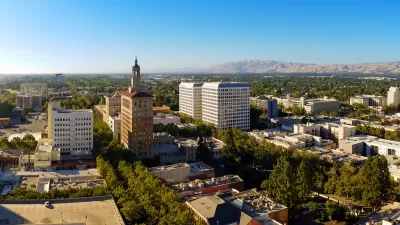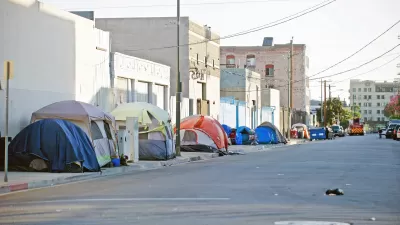The number of social impact bond programs in the United States has expanded quickly, to eight, with examples found in Massachusetts, New York, Ohio, Utah, and, now, California.
An article by J.B. Wogan explains the ins and outs of social impact bonds, a financing tool that, as defined in the article, taps the "private and philanthropic sectors for early investors for otherwise cost-prohibitive public programs." Wopgan notes that the tool is also sometimes known as a "pay for success" program, and even though it's called a "bond," it's actually "more of a public-private partnership for experimental and expensive interventions in human services."
The social impact bond model also recently launched a new, ambitious effort in Santa Clara County, California, with Project Welcome Home. According to Wogan, over the next six years, "a nonprofit called Abode Services will provide housing and support services to between 150 and 200 long-term homeless people."
Wogan adds: "The nonprofit will assign small caseloads to a multidisciplinary team with training in psychiatry, substance abuse, social work, nursing and vocational rehabilitation. The approach represents a combination of evidence-based practices, and is backed by academic research and recommended by the U.S. Department of Housing and Urban Development."
Wogan also notes that Project Welcome Home follows shortly on the heels of the demise of the "first and most famous" social impact bond in the country—a program providing group therapy for juvenile inmates. Project Welcome Home will also allow project funders to discontinue the program if it proves ineffective.
FULL STORY: Can Social Impact Bonds Help Reduce Homelessness?

Planetizen Federal Action Tracker
A weekly monitor of how Trump’s orders and actions are impacting planners and planning in America.

Maui's Vacation Rental Debate Turns Ugly
Verbal attacks, misinformation campaigns and fistfights plague a high-stakes debate to convert thousands of vacation rentals into long-term housing.

San Francisco Suspends Traffic Calming Amidst Record Deaths
Citing “a challenging fiscal landscape,” the city will cease the program on the heels of 42 traffic deaths, including 24 pedestrians.

Trump Prompts Restructuring of Transportation Research Board in “Unprecedented Overreach”
The TRB has eliminated more than half of its committees including those focused on climate, equity, and cities.

Amtrak Rolls Out New Orleans to Alabama “Mardi Gras” Train
The new service will operate morning and evening departures between Mobile and New Orleans.

The Subversive Car-Free Guide to Trump's Great American Road Trip
Car-free ways to access Chicagoland’s best tourist attractions.
Urban Design for Planners 1: Software Tools
This six-course series explores essential urban design concepts using open source software and equips planners with the tools they need to participate fully in the urban design process.
Planning for Universal Design
Learn the tools for implementing Universal Design in planning regulations.
Heyer Gruel & Associates PA
JM Goldson LLC
Custer County Colorado
City of Camden Redevelopment Agency
City of Astoria
Transportation Research & Education Center (TREC) at Portland State University
Jefferson Parish Government
Camden Redevelopment Agency
City of Claremont





























